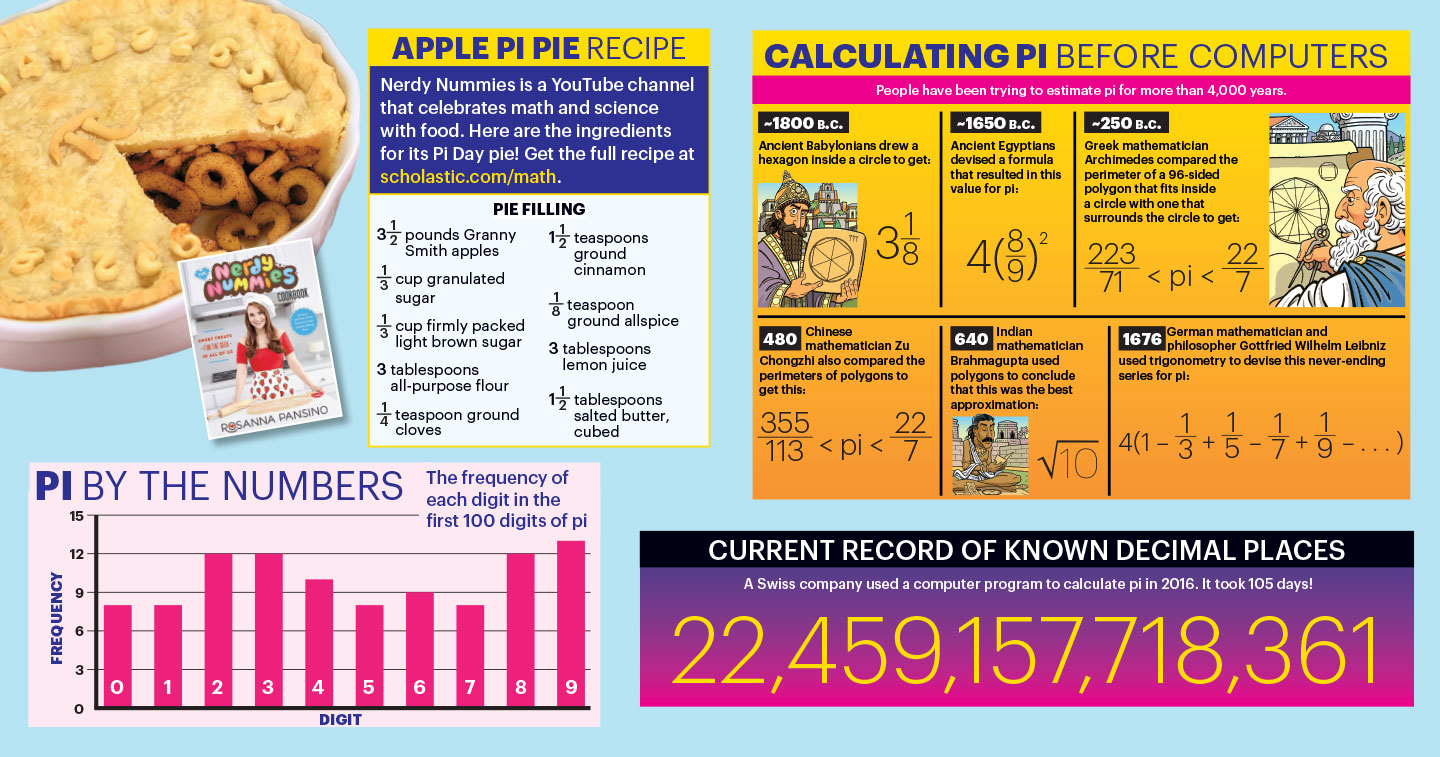March 14 may seem like an average day, but math enthusiasts around the world celebrate it as Pi Day! Pi, also expressed using the Greek letter π, is one of the most widely used constants in math. It represents the ratio for the circumference of a circle to its diameter, and equals approximately 3.14159.
Pi is an irrational number. Its decimal values go on indefinitely—but that hasn’t stopped mathematicians from trying to calculate them for thousands of years. The earliest records of pi date back to the ancient Babylonians. They estimated pi as 3.125. Today, computers have calculated more than 22 trillion digits of pi!
Despite the ancient history of pi, celebrating it every March 14 is a relatively new tradition. Physicist Larry Shaw organized the first-ever Pi Day celebration at San Francisco’s Exploratorium in 1988. The museum has had one every year since. “One of our favorite things to do at the Exploratorium is to write pi-kus, which are poems in the haiku style that are about pi,” says senior scientist Julie Yu. “And everyone gets free pie!”
But Yu and her fellow scientists at the Exploratorium aren’t the only ones celebrating Pi Day. In 2009, Congress declared Pi Day a national holiday. Read on to explore statistics about many mathematicians’ favorite holiday!


